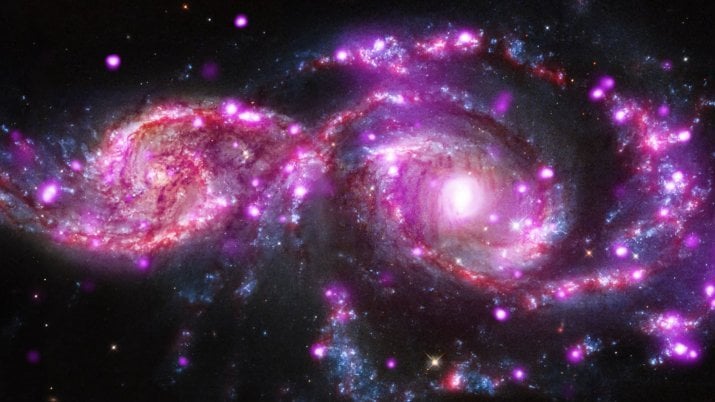In the past few years, the field of artificial intelligence has exploded with huge leaps and bounds of progress. Scientists have now found a way to take an intelligent AI and use it to analyze images of distant galaxies – revealing key information about galactic evolution.
When we learn more about the distant galaxies around us, we learn more about our own Galaxy and how and why it works the way it does. By taking a deep learning algorithm and applying it to the study of other galaxies, we may finally have the tools we need to truly understand galactic evolution.
The main way in which this new ability to study galactic evolution is useful is due to the fact that the majority of the galaxies around us formed over billions of years, with our telescopes only capable of giving us a small snapshot of the history of the systems. Our only option right now is to capture still images of distant galaxies and use a computer-based simulation to surmise how the process of galactic evolution occurred.
The scientists behind the team studying galactic evolution are from the University of California Santa Cruz, who took a deep learning algorithm and fed it images of computer simulated galaxies – training it to be able to recognize three important stages of galactic evolution. After a short period spent learning from existing images, the artificial intelligence was able to understand and simulate galactic evolution with surprising accuracy.
According to co-author Joel Primack in a recent statement, “we were not expecting it to be all that successful. I’m amazed at how powerful this is…we know the simulations have limitations so we don’t want to make too strong a claim. But we don’t think this is just a lucky fluke.”
As for the actual process of studying galactic evolution, the team of scientists focused on a phenomenon known as “blue nugget” – an area of these distant galaxies that formed a dense, star-forming region where these astral bodies emit light in blue wavelengths. This blue nugget phenomenon had been seen in several previous simulations, but what made this particular study of galactic evolution unique was that the deep learning algorithm was able to not only classify the Galaxy, but also to establish its own pattern in both simulated and observed data as well as noting that the blue nugget occurred in galaxies within a certain range of mass.
“It may be that in a certain size range, galaxies have just the right mass for this physical process to occur,” co-author of the work David Koo said in the same statement.
“This project was just one of several ideas we had,” Koo added. “We wanted to pick a process that theorists can define clearly based on the simulations, and that has something to do with how a galaxy looks, then have the deep learning algorithm look for it in the observations. We’re just beginning to explore this new way of doing research. It’s a new way of melding theory and observations.”
While the artificial intelligence is capable of showing us new information about galactic evolution, there’s currently not a way for humans to see how exactly it came to these revelations – calling into question our ability to really understand if these simulations have truly been able to come up with the correct answer. The study of galactic evolution has made big steps forward with the results of this study, but it’s not possible for humans to fully understand the intelligence’s thought process to then apply that process to our own study. Still, it remains proof that the field of artificial intelligence had far-reaching capabilities – even going so far as to be a major contributor to our study of distant galaxies. More study is needed moving forward to understand the full extent of the AI’s capabilities as well as to come up with other practical situations in which these algorithms could contribute to our understanding of astronomy.
The paper, titled “Deep Learning Identifies High-z Galaxies in a Central Blue Nugget Phase in a Characteristic Mass Range,” is set to be published in the Astrophysical Journal.





